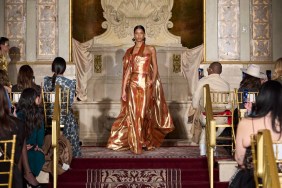The Guardian just published a gloss on a recent academic paper titled, “Is it Cool to Be Fashionable? The Instabilities of Fashion and Cool,” which was presented by Dr. Vanessa Brown, a senior lecturer at Nottingham Trent University, at an academic conference in September.
The paper (which you can read here) aims to understand how two elusive pop cultural concepts, the cool and the fashionable, relate to each other. Brown argues that although “cool” is central and relevant the fashionable (and more broadly, to modern society as a whole), the idea of “cool” is antagonistic to the fashionable, and it even “depends on opposition to it.” To put it more simply: fashion wants to be cool, but cool doesn’t want to be fashionable.
In large part, this is related to the dynamics of fashion trends, which originate outside of the mainstream (either at the top of social hierarchy or through subcultures) before being picked up by the dominant culture. Brown writes:
“We speak of ‘slaves to fashion’ and ‘fashion victims’. Fashion magazines implore their readers to ‘steal’ celebrity ‘style’. This notion has something in common with … what is sometimes known as the ‘trickle-down effect’, which sees fashion as a manifestation of the social hierarchy, in which those ‘underneath’ copy those ‘above’, justified purely on the basis that this is the style of the class above, as opposed to any other potential criteria…This is often visualised as a simple fashion wave, where a small number of privileged innovators participate at the beginning, gradually swelling to include most of society, at which point a new wave begins.
Understanding fashion in this way makes it almost impossible for anyone but those at the very top (or leading edge, or the avant-garde) to be considered cool, for the simple reason that the rest will always be running to catch up.”
Additionally, Brown notes that in the process of trickling down, the “aesthetics of cool” often become diluted, which results in the loss of their original appeal. For example, consider punk style, as it evolved from CBGBs to Hot Topic and the Met Ball — and was neutered in the process.
The Guardian also cites a 1990 paper which, in its efforts to quantify cool, suggested that it occurs “12-18 months ahead of the mainstream.”
[Is it Cool to be Fashionable? The Instabilities of Fashion and Cool via The Guardian]








